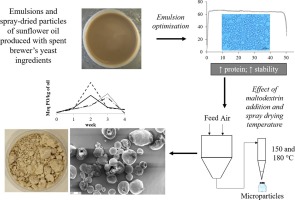In the quest for sustainable solutions to tackle electronic waste, scientists have tapped into an unexpected resource: spent brewer’s yeast, a byproduct of beer brewing. In a groundbreaking study published in Frontiers in Bioengineering and Biotechnology, researchers have demonstrated how spent brewer’s yeast can be repurposed to selectively capture metals from waste streams, offering a promising avenue for eco-friendly recycling.
Electronic waste poses a significant challenge due to the complexity of separating various metals contained within it. Traditional recycling methods often fall short, leading to inefficiencies and environmental concerns. Seeking an alternative approach, researchers turned to spent brewer’s yeast, leveraging its unique properties to extract metals from waste streams effectively.
Dr. Klemens Kremser, from the University of Natural Resources and Life Sciences, Vienna, explained, “Electronic waste is difficult to recycle because it is very heterogeneous. Getting the metals in solution is a first step, but the selective recovery of the metals remains a challenge. Compared to processes such as chemical precipitation, biosorption using spent brewer’s yeast presents a cheap and environmentally friendly approach.”
Brewer’s yeast, a common byproduct of beer brewing, emerged as an ideal candidate for metal recovery due to its availability and affordability. The researchers harnessed the electrostatic interactions on the yeast’s surface, allowing metal ions to adhere to it through a process called adsorption. By adjusting the pH of the solution, the researchers could modulate these interactions to target specific metals present in the waste stream.
The study focused on key metals such as zinc, aluminum, copper, and nickel, essential components found in electronic devices. Remarkably, the researchers achieved impressive metal recovery rates, with over 50% of aluminum, more than 40% of copper, and more than 70% of zinc retrieved from test solutions. Even in the case of a real polymetallic waste stream, over 50% of copper and over 90% of zinc were successfully recovered.
Moreover, the yeast biomass demonstrated remarkable reusability, retaining its effectiveness over multiple cycles of metal recovery. This highlights the potential for a sustainable, closed-loop system where spent brewer’s yeast serves as a continuous resource for metal extraction.
Anna Sieber, Ph.D. fellow of K1-MET, emphasized, “Using waste biomass for metal recovery is not a completely new process, but the selectivity of biosorption processes is a key factor for efficient metal recovery from polymetallic waste streams.”
While the findings offer promising insights, the researchers underscore the need for further validation in real-world conditions before scaling up the process for industrial applications. Nevertheless, the study represents a significant step forward in harnessing natural resources to address pressing environmental challenges and underscores the importance of innovative, sustainable solutions in modern waste management practices.
